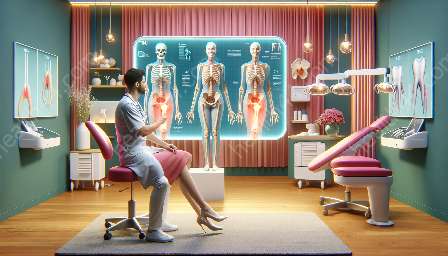The temporomandibular joint (TMJ) plays a crucial role in facilitating jaw movement and is susceptible to disorders that can cause significant pain and impairment. Understanding the anatomy of the temporomandibular joint and the nature of TMJ disorders is essential for effective rehabilitation.
Anatomy of the Temporomandibular Joint
The temporomandibular joint is a hinge-type synovial joint that connects the mandible (lower jaw) to the temporal bone of the skull. It comprises the articular disc, the articular eminence, the mandibular condyle, and the joint capsule. The joint is supported by ligaments and surrounded by muscles that enable jaw movement, such as chewing, speaking, and yawning.
Temporomandibular Joint Disorder (TMJ)
Temporomandibular joint disorder (TMJ or TMD) refers to a group of conditions that affect the TMJ and associated muscles, often resulting in pain, restricted movement, and clicking or popping sounds. Common causes of TMJ disorder include trauma, arthritis, malocclusion, stress, and parafunctional habits like teeth grinding.
Role of Physiotherapy and Exercise in TMJ Rehabilitation
Physiotherapy and exercise are integral components of the multidisciplinary approach to TMJ rehabilitation. These modalities aim to address pain, restore function, and improve the quality of life for individuals with TMJ disorders.
Understanding the Benefits of Physiotherapy
Physiotherapy for TMJ disorders involves a comprehensive assessment by a skilled physiotherapist to determine the underlying causes and contributing factors. Treatment may include manual therapy, therapeutic exercises, modalities like heat or ice, and patient education on posture, ergonomics, and relaxation techniques.
Manual therapy techniques, such as joint mobilization and soft tissue mobilization, are used to improve joint mobility, reduce muscle tension, and alleviate pain. Additionally, therapeutic exercises focus on strengthening and stretching the muscles that control jaw movement and improving overall musculoskeletal function.
Implementing Exercise in TMJ Rehabilitation
Exercise is a fundamental aspect of TMJ rehabilitation, as it promotes flexibility, strength, and coordination of the jaw muscles. Patients are guided through tailored exercise programs to improve joint stability, reduce muscle imbalances, and enhance overall jaw function.
Common exercises may include gentle jaw stretching, resistance training using resistance bands, and relaxation techniques to decrease tension in the jaw and surrounding muscles. Furthermore, incorporating lifestyle modifications and ergonomic adjustments can support the effectiveness of exercise programs and contribute to long-term management of TMJ disorders.
Comprehensive Management and Patient Education
Physiotherapy and exercise interventions are often complemented by patient education, which empowers individuals to actively participate in their rehabilitation process. An essential component of patient education is raising awareness about proper jaw mechanics, stress management, and behavioral modifications to reduce parafunctional habits that exacerbate TMJ symptoms.
Furthermore, collaborative care involving dentists, orthodontists, and other healthcare professionals is essential in addressing TMJ disorders comprehensively. By integrating physiotherapy and exercise into the multidisciplinary treatment plan, patients can experience significant improvements in pain reduction, increased jaw mobility, and enhanced overall well-being.


